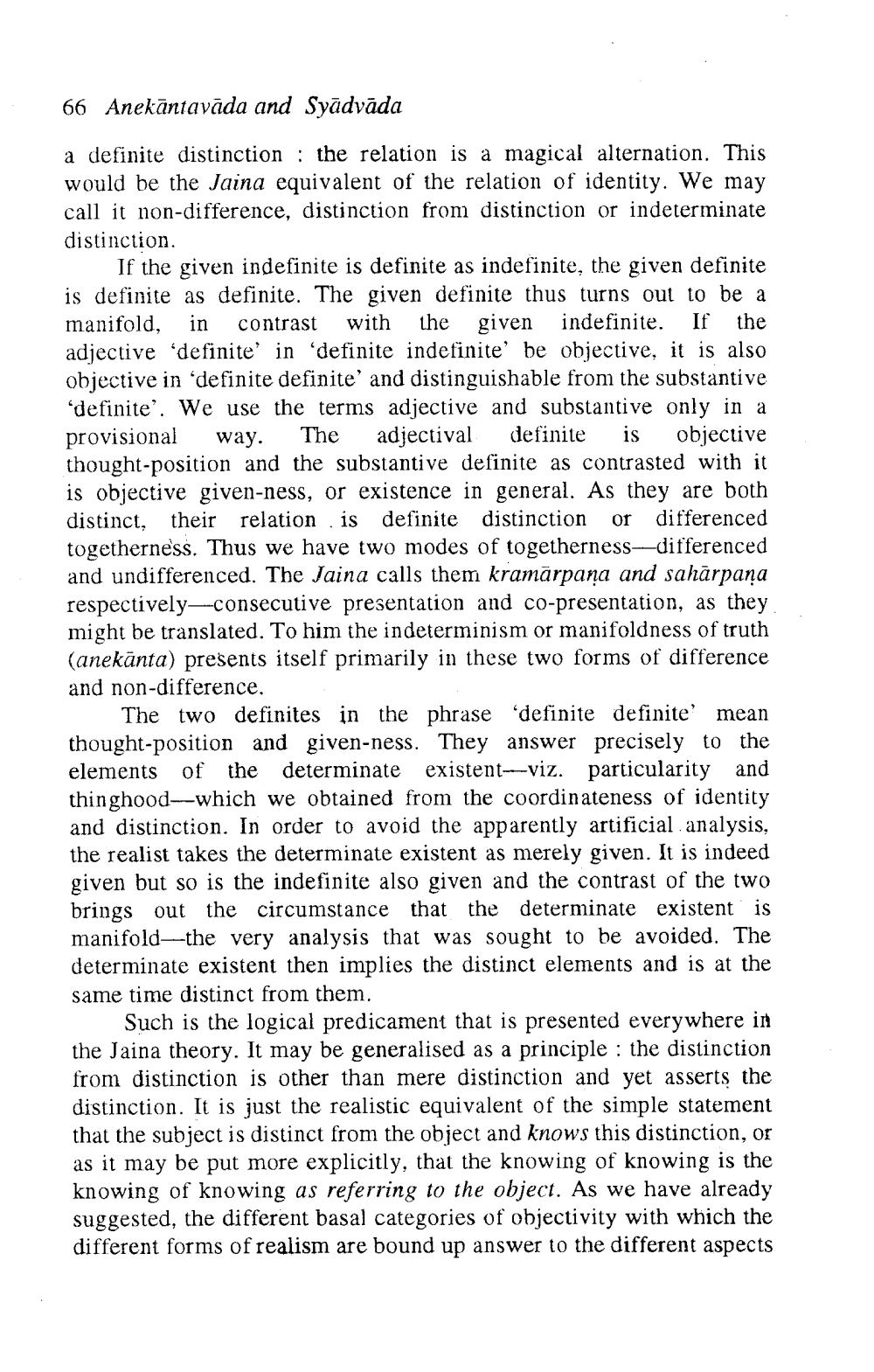________________
66 Anekāntavāda and Syadvāda
a definite distinction : the relation is a magical alternation. This would be the Jaina equivalent of the relation of identity. We may call it non-difference, distinction from distinction or indeterminate distinction.
If the given indefinite is definite as indefinite, the given definite is definite as definite. The given definite thus turns out to be a manifold, in contrast with the given indefinite. If the adjective 'definite' in 'definite indefinite' be objective, it is also objective in 'definite definite' and distinguishable from the substantive 'definite'. We use the terms adjective and substantive only in a provisional way. The adjectival definite is objective thought-position and the substantive definite as contrasted with it is objective given-ness, or existence in general. As they are both distinct, their relation is definite distinction or differenced togetherness. Thus we have two modes of togetherness-differenced and undifferenced. The Jaina calls them kramārpana and sahārpana respectively-consecutive presentation and co-presentation, as they might be translated. To him the indeterminism or manifoldness of truth (anekānta) presents itself primarily in these two forms of difference and non-difference.
The two definites in the phrase "definite definite' mean thought-position and given-ness. They answer precisely to the elements of the determinate existent-viz. particularity and thinghood—which we obtained from the coordinateness of identity and distinction. In order to avoid the apparently artificial analysis, the realist takes the determinate existent as merely given. It is indeed given but so is the indefinite also given and the contrast of the two brings out the circumstance that the determinate existent is manifold-the very analysis that was sought to be avoided. The determinate existent then implies the distinct elements and is at the same time distinct from them.
Such is the logical predicament that is presented everywhere in the Jaina theory. It may be generalised as a principle : the distinction from distinction is other than mere distinction and yet asserts the distinction. It is just the realistic equivalent of the simple statement that the subject is distinct from the object and knows this distinction, or as it may be put more explicitly, that the knowing of knowing is the knowing of knowing as referring to the object. As we have already suggested, the different basal categories of objectivity with which the different forms of realism are bound up answer to the different aspects




